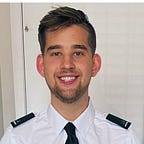Aviation Security — How Airports Can Improve Security
The aviation industry is know for its remarkable safety and ability to transport millions of people every single day. Most people would probably say they’re much more afraid of the actual flight compared to walking through a security check point. If we look at where most terrorist bombings take place within the aviation industry you might be surprised to learn that most terrorism takes place before you even get past security. An example of one of the latest attacks would be the brussels airport bombing that occurred in March of 2016. This attack occurred in the check in area/general lobby. The bombing killed 32 people and injured more than 300 people.
Personally, I believe the security for this type of terrorism is very minimal. We do have layers of security that TSA uses in order to mitigate these events from happening, but by no means are they fool proof. One layer of security the TSA can use is intelligence. Being able to figure out when/where a terrorist attack will be occurring is critical in stopping it from playing out. Another layer of security that is used is K9 explosive sniffers. These dogs are highly trained in being able to pick up trace amounts of explosives. They play a pivotal role in stopping these attacks from happening.
Effectiveness of current mitigation strategies
Personally, I don’t believe the TSA does a good job at all with it’s current mitigation strategies. The reason I say this is because the fail rate for detecting weapons through security in 2017 was in the ballpark of 70–80%. What's even more incredible is that this number had gone up from previous years where the fail rate was near 95%. At these numbers it feels more like an illusion for the general public when it comes to actually being safe.
My recommendations for improvement
I believe that TSA is faced with an almost impossible situation. I want to talk about two different areas where security needs to be improved immensely. The first will be how they can mitigate the chances of a bombing occurring in the lobby/pre security checkpoint.
I believe the only way we can stop these events from occurring is to have automation take over radiation detection within airports along with screening passengers before entering the airport. The reason I think automation is critical to this security being improved is because there are simply just too many people walking through airports. This is also heightened by human fatigue over time.
The other area where I think security needs to be improved is the actual screening process. having a 70–80% fail rate is just not acceptable. This does a disservice to the tax payers and the general public. We cannot rely on employees to outwit terrorist organizations. Once of the reasons I think the fail rate is so high is due to fatigue. After screening 10,000 people in one day how likely are you to make a mistake? remember all it takes for an event to happen is one mistake. The actual technology of screening needs to be automated and improved immensely.
References —
Nixon, R. (2016, May 31). T.S.A. Trains Dogs to Stay One Sniff Ahead of Bomb Makers. Retrieved November 15, 2020, from https://www.nytimes.com/2016/06/01/us/tsa-trains-dogs-to-stay-one-sniff-ahead-of-bomb-makers.html
Goldstein, M. (2017, November 09). TSA Misses 70% Of Fake Weapons But That’s An Improvement. Retrieved November 15, 2020, from https://www.forbes.com/sites/michaelgoldstein/2017/11/09/tsa-misses-70-of-fake-weapons-but-thats-an-improvement/?sh=2d831c0f2a38
TSA. (2017, August 01). Inside Look: TSA Layers of Security. Retrieved November 15, 2020, from https://www.tsa.gov/blog/2017/08/01/inside-look-tsa-layers-security
